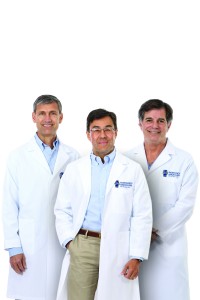 Often called a “cat scan,” Computed Tomography (CT) is a non-invasive medical test used to look at the lungs, bones, soft tissues and/or blood vessels. CT uses an x-ray tube that rotates 360º around the area being scanned, capturing multiple pictures – or “slices” – as it goes. The anatomical information is sent directly to a computer, where sophisticated software combines the images to create a nearly 3-D composite image of the organ, bone or object. The image is then available for immediate storage and rapid sharing with your doctor, and for creating hard copy images for review by your doctor and your Board Certified RAO radiologist.
Often called a “cat scan,” Computed Tomography (CT) is a non-invasive medical test used to look at the lungs, bones, soft tissues and/or blood vessels. CT uses an x-ray tube that rotates 360º around the area being scanned, capturing multiple pictures – or “slices” – as it goes. The anatomical information is sent directly to a computer, where sophisticated software combines the images to create a nearly 3-D composite image of the organ, bone or object. The image is then available for immediate storage and rapid sharing with your doctor, and for creating hard copy images for review by your doctor and your Board Certified RAO radiologist.
The most advanced CT is the 16-slice helical scanner, which takes more pictures at a faster speed than conventional CT, enabling it to catch small lesions that may otherwise go undetected. “It captures more images in less time for a more complete and accurate picture than standard CT models,” says Mark Yap, MD. “That’s why we use it exclusively.” CT Scanning is effective in identifying issues within the chest, heart, abdomen, head and limbs, and for detecting certain cancers, like colon and lung. A recent government study showed that heavy smokers may reduce their risk of death from
lung cancer by 20% simply by having an annual CT scan. CT also assists with cancer treatment staging and monitoring, making it one of the most powerful allies against disease.
Radiology Associates of Ocala, P.A.
(352) 671-4300
www.RAOcala.com
Check Also
CUSTOMIZABLE LIGHT ADJUSTABLE LENS A GAMECHANGER FOR CATARACTS PATIENTS
All Americans have some degree of cataract change by the age of 75. As the …
 Central Florida Health and Wellness Magazine Health and Wellness Articles of the Villages
Central Florida Health and Wellness Magazine Health and Wellness Articles of the Villages



